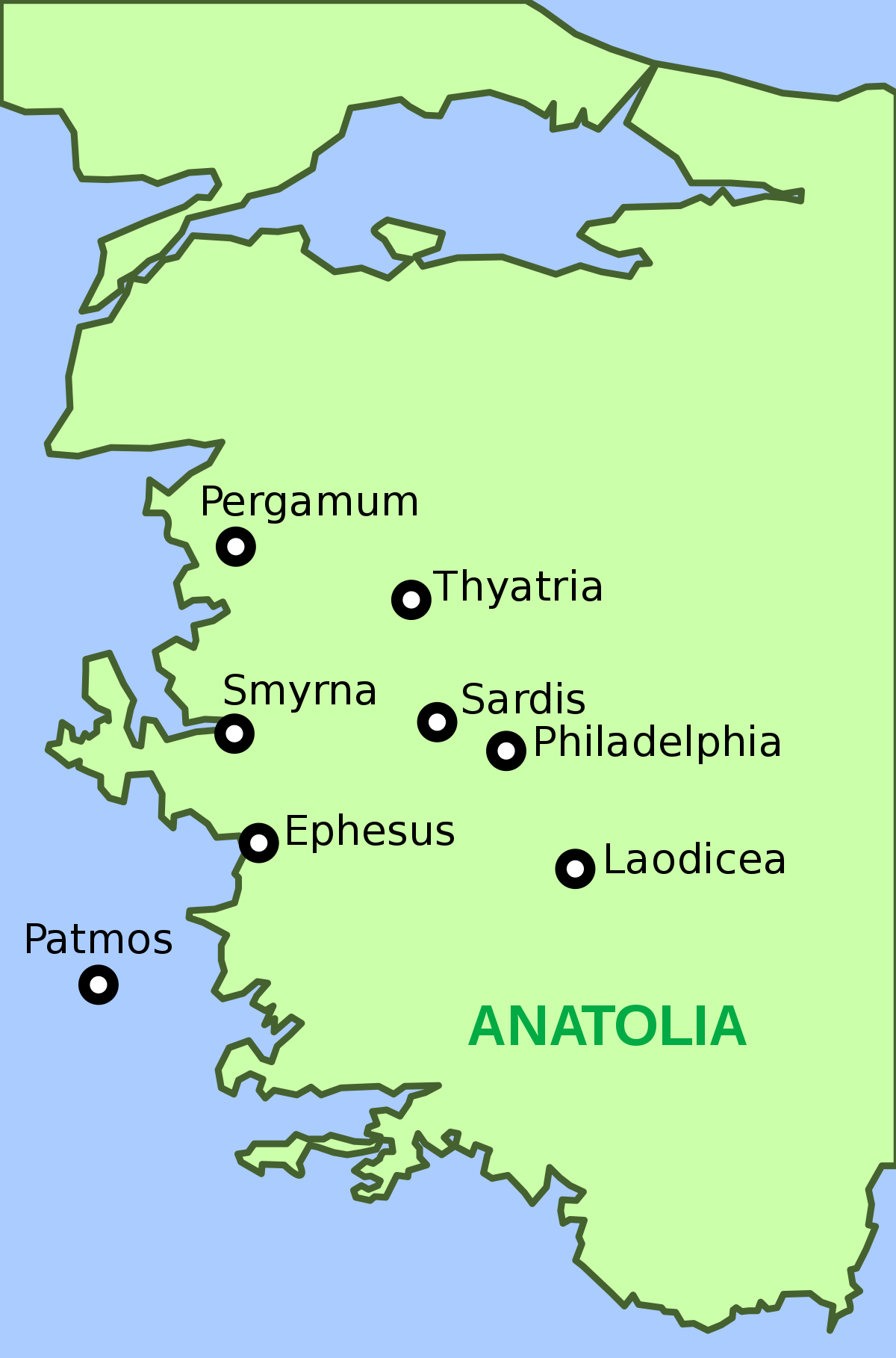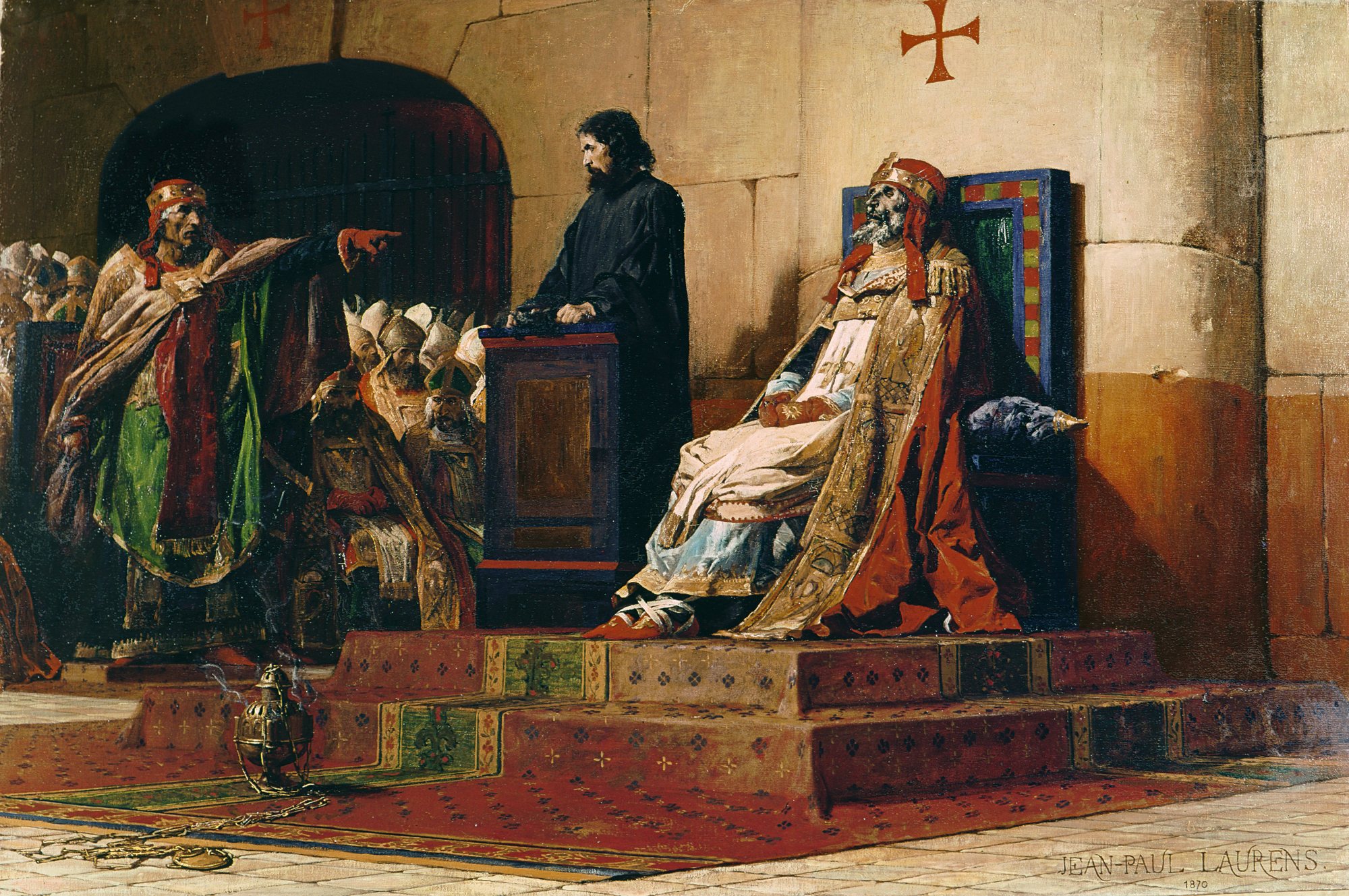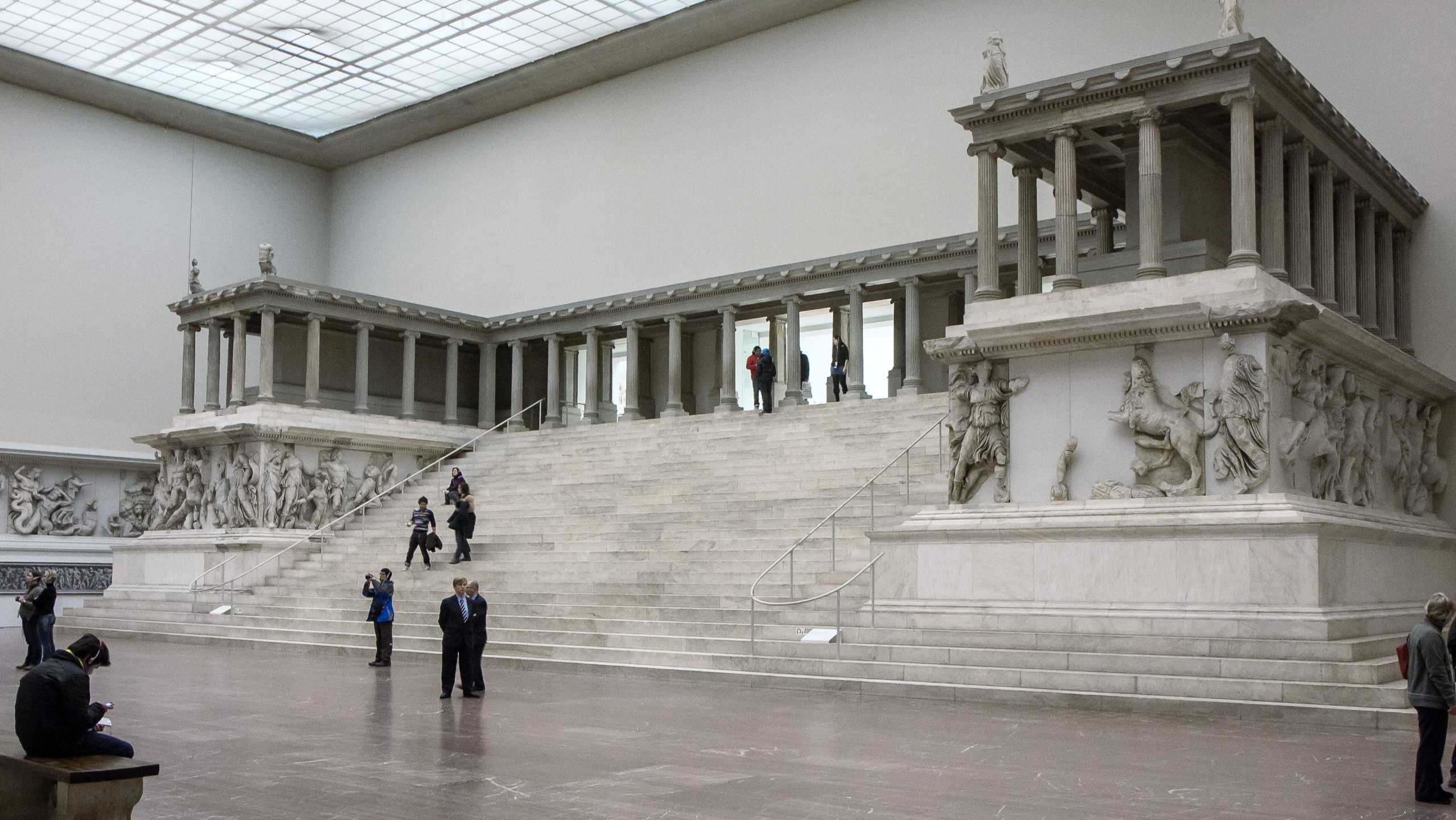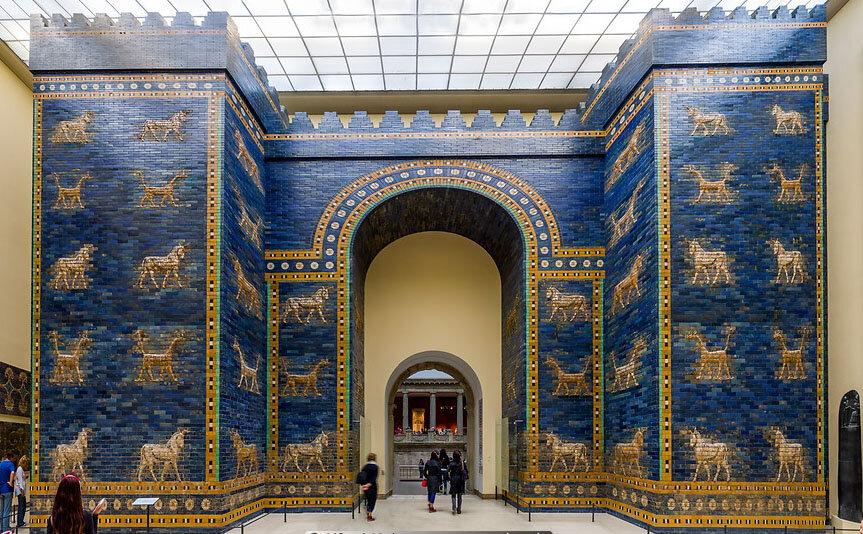Here's a big "Whoa, wait, what?!?!?" part of the beginning of the book of Revelation. It gives us great insight into something that is currently happening in our society, and that will continue to happen over the coming decades.
Revelation 2 and 3 contain the letters Jesus had John write to the seven churches. The letters proceed in order from Ephesus to Smyrna, Pergamum, Thyatira, Sardis, Philadelphia, and then Laodicea. You might note that they proceed counterclockwise in order around the map, starting with the church closest to Patmos.
These letters outline the major issues facing the individual churches receiving each letter, but
they also outline the major issues faced sequentially over time by the Church worldwide overall over the next 2,000+ years. Aspects of each of these churches can be found in the Church at any time throughout history, but the prevalent Church culture of any given era can be found reflected in its respective letter.
I'll do a quick summary of it, and dig in more deeply in future posts, but for now, I would encourage you to read each of the letters for yourself to see how it comes together.
The letter to the church in Ephesus deals with the problems facing the Church in the years immediately after the death of the Apostles. Jesus tells the Church that he loves their hard work, but He does not like that they have forgotten their first love - Him. This Church has fallen into starting to live a system of religious good deeds, but is losing focus on having Jesus be the main thing and the main motivator for everything.
The church in Smyrna gets a letter next, and this letter represents the Church in the era of intense Roman persecution, which Nero really pressed forward, and which continued under 10 evil Roman emperors. Jesus cryptically warns the Church that they will face major persecution for a period of "10 days," or periods of time, which may reflect those 10 emperors. Jesus urges this Church to stand strong during their persecution. Interestingly, the city name of Smyrna comes from the word for "myrrh," which is a fragrance that was used for mourning and preparing the dead for burial. Jesus was symbolically given myrrh as a gift from the wise men, and He was prepared for burial with myrrh. Myrrh releases its beautiful fragrance when it is crushed, and it is incredibly valuable. The symbolism here should strike you. By writing to the church in Smyrna/myrrh about their suffering and death, Jesus shows how He views the suffering of His brothers and sisters - when they are crushed, the beauty of their sacrifice is both mourned and deeply treasured.
The church in Pergamum represents a major shift in Church history. The Roman emperor Constantine famously converted to Christianity, ending official persecution of the Christians. In fact, the followers of Jesus quickly became favored citizens! With favor came partnership with the State. The name Pergamum means "bad marriage," which is what this was, and remains to this day. The Church of Jesus Christ is no good partner for any government. The Church was corrupted. Pagan priests and practitioners entered the Church as this time, which led many astray. Jesus warns this Church to avoid the pagan teachings (represented symbolically by the reference to the Old Testament story of Balaam), and also to avoid the teaching of the Nicolaitans. We do not know the teachings of the Nicolaitans, but their name comes from the words "Nike (victory)" and "laos (people)," and seems to mean, "Victory over the people." It is thought that this represented a group of domineering teachers who sought to impose their will and control over the laity, a practice which was previously condemned when Jesus castigated the Jewish teachers of His day.
One more note about Pergamum - there is a fascinating connection between a place of evil in this ancient city and the Nazi regime. I'll share that soon.
After the Church received government support and power, the next era of the Church is represented by the letter to
the church in Thyatira, which reflects trends in Christianity of the Middle Ages. Jesus praises the faith, love and good deeds of Christians in this era, but He
crushes them for allowing the teachings of the Old Testament woman Jezebel to lead many of their brethren astray. I encourage you to read the full story of Jezebel, found in 2 Kings, but here's the Cliff's Notes. Jezebel was an evil, evil queen of Israel who conspired with her equally evil husband, Ahab, to promote pagan immorality and idol worship. One of her greatest sins was to find false witnesses to accuse a man of crimes he did not commit, so that he could be condemned, murdered, and have his property stolen for use by the King.
If you're at all remotely aware of the horrible history of the organized, official Church of the Middle Ages, you know full well that this was common practice. Heretics were invented left and right in order to seize their property. People were slaughtered by the Church and their property stolen. Even the bodies of dead popes were exhumed and put on "trial" in sham Church courts. This is no anti-Catholic rant; it's simply the undeniable,
very well-documented truth.
Here's an artist's rendering of what was referred to as the Cadaver Synod of 897.
Here's something wild - Jesus warns this Church that, if it does not repent of all of these wicked practices, that He
"...will throw her on a bed of sickness, and those who commit adultery with her into great tribulation, unless they repent of her deeds. And I will kill her children with plague..." [Rev 2:22-23] I'm not generally one to assign natural disasters as judgments of God. In this case, it should give us pause to consider whether or not the terrible plagues of the Middle Ages, which killed half of Europe, reflect the warnings of Jesus here.
The church in Sardis receives a brutal rebuke -
"you have a name that you are alive, and yet you are dead." [Rev 3:1] This is a church (and Church) that started well, but seems to just be dying on the vine. Jesus urges them -
"So remember what you have received and heard; and keep it, and repent." This letter to Sardis appears to represent the next era in Church history, as it describes what has become the fate of many of the denominations birthed from the Reformation. They "have a name," bold names that often tie to the brave stands of their founders, yet they are dying. Mainline Protestant denominations have famously been in decline for over a century. I will never forget a sociology course I took at UT-Austin back in 2000. The professor walked us through a history of religion in America, and he presented the puzzling paradox of the dying mainline Protestant churches. This was secular scholarship, mind you, not some fundamentalist seminary. He taught us and backed his assertions with data. He said that the uniform, historical trend has been that when a denomination starts to require less of its members in terms of personal life change and adherence to Scripture, that denomination starts to diminish in numbers. He showed us time and again how this was repeated throughout history.
Here's a quote from History.com, which outlines a particular time in the early 1700's that this happened, which ultimately led into the next era of Church history.
"In many ways, religion was becoming more formal and less personal during this time, which led to lower church attendance. Christians were feeling complacent with their methods of worship, and some were disillusioned with how wealth and rationalism were dominating culture. Many began to crave a return to religious piety." - Source Here
That "return to religious piety" led to the Great Awakening, which birthed the period of revival that lines up with the next letter in Revelation, which is to
the church in Philadelphia. Jesus tells this Church -
"Behold, I have put before you an open door which no one can shut, because you have a little power, and have followed My word, and have not denied My name." [Rev 3:7] This period, from around the time of the Great Awakening, has continued on to the present day, which has seen the Gospel spread incredibly all over the world. Missionaries with "little power," often sent out and supported by a single congregation, have been able to take the message of Jesus all over the world. Movements with "little power" have been able to spread on their own, empowered only by the power of Jesus and the "open door" He has given the Church during this time period. The Church in China is a wonderful example of this, as it spreads like wildfire through underground, forbidden churches that meet in homes. They are persecuted relentlessly, but nothing the CCP tries to do can force shut the door that Jesus has declared open....
....but things are changing. We are likely in the twilight days of the church of Philadelphia era, because a new Christianity is rising, and it is gaining in popularity around the world. It is the Christianity of
the church in Laodicea.
This board has a limit of 10,000 characters per post, so Laodicea will come immediately after this one.















